With the new Battlefield 6, Electronic Arts has made a true benchmak. The game pushes visuals to its limits, by utilizing the full breadth of the latest hardware innovtions such as advanced anti-aliasing and mesh shaders. Although it's pretty demanding, the game lacks ray tracing, which is understandable given the competitive positioning of the first-person shooter.
We tested the game on the RTX 5090 and 5070. Read on for a detailed analysis and findings of how the game performs. Spoiler alert: you'll need a ton of VRAM to maintain high framerates.
Note: Right now, the performance review is limited to campaign only. We will update the article with multiplayer benchmark soon.
Battlefield 6 on the RTX 5090: Top-notch 4K performance without compromises
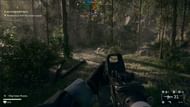
The RTX 5090 is the flaghship GPU this generation. It is designed for top-notch 4K performance without compromises, and it delivers on this promise in Battlefield 6. We tested the game at 3840 x 2160 resolution on the ROG Astral OC variant of the GPU, which utilizes slightly higher boost clocks to deliver even higher performance than the stock Founder's Edition. The GPU was paired with the Ryzen 9 9950X3D and 32 GB of DDR5 system RAM, making it the fastest gaming PC you can build.
Here are the performance numbers logged:
4K 100 FPS with DLAA is impressive, especially given how crisp and visually appealing the game looks. This native resolution performance already sets the bar high for competitive FPS in Battlefield 6.
As we turned on DLSS 4 features, performance kept moving up at the cost of quality and performance, finally maxing out at 360 FPS on average, which is a whopping lot at 4K.
However, if you look at the 0.1 and 1% low numbers, the game got no better with frame generation turned on. In fact, with FG 3x and DLSS set to Performance, we note much lower stability numbers, which suggests at the choppiness one can experience with the feature turned on.
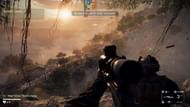
However, for most gamers, 4K native resolution with DLAA with suffice if you're playing on top-notch GPUs like the 5090. We recommend mixing it with FG 2x or 3x to ensure a competitive experience without sacrificing visual quality. Now, let's look at how the performance behavior scales on weaker GPUs to form a better idea.
RTX 5070 performance tests in Battlefield 6: Faltering performance given the VRAM buffer
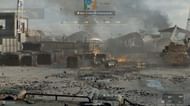
First, we test the 5070's performance at 4K in Battlefield 6 to get an idea of how performance compares to the 5090. Although the card manages a playable framerate, we note it to be barely playable at around 36 FPS. Interestingly, performance with TAA (55 FPS on average) is better than halving the resolution with DLSS Performance (40 FPS average). This is primarily attributed to the VRAM limitations of the 5070.
The new Transformer-based upscaling model pushed with DLSS 4 uses twice the parameters (compared to the older CNN-based variant) for more than four times the image quality. However, on VRAM-starved cards like the 5070, especially at high resolutions, that becomes a problem. With DLSS turned on, the card draws ~13.5 GB of memory.
That leads to CPU offloading, which in turn locks DLSS-based performance to the 36-40 FPS margin already achieved by DLAA.
Here are some numbers:
With frame generation, we see numbers scale exactly linearly to the 36 FPS margin achieved with DLAA, further proving our hypothesis.
Here's a look at picture quality scales fair on the 5070:
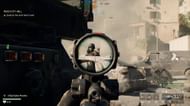
Overall, quality is decent with slight shimmering at the FG 3x and 4x presets. This is expected, especially given the fast-paced nature of the game. To fix this, Electronic Arts has introduced a "Future Frame Rendering" technology, which helps maintain image quality in fast-paced scenarios.
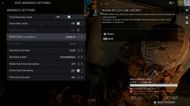
This doesn't help the VRAM situation, however. Although you gain average framerates, the 0.1 and 1% low numbers never improve because your GPU isn't generating any more frames. That creates an even worse situation than what we observed on the RTX 5090.
Battlefield 6 on the RTX 5070: 1440p performance tests
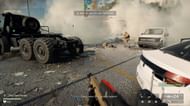
At QHD resolutions in Battlefield 6, which is the 5070's "advertised" tier, we see that average performance does not improve much with the Overkill settings applied. We still get 55 FPS on average, but the 0.1% and 1% low numbers climb to 32 and 38, respectively (up from 29 and 31 at 4K). This is because of the VRAM demands of the Overkill preset, still pushing for 12+ GB with its high-resolution textures.
Things improve significantly by dropping the settings to Ultra. We see a doubling of framerates to 92 FPS average as the memory requirements drop significantly.
We recommend mixing 1440p Ultra with DLSS Balanced and frame generation 2x for a mix of visual quality and high framerates in Battlefield 6. Our system recorded 127 FPS on average, which suggests the base framerate to multiply from stayed around the 60 FPS mark. That reduction is again driven by the additional VRAM requirements of DLSS 4.
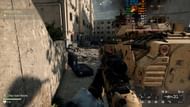
In terms of picture quality, expect a hit, but Battlefield 6's fidelity remains impressive. We, however, noted a few stutters here and there, especially during hardcore combat. Given the Campaign's larger maps, this could not be a visible problem in multiplayer modes.
Given these constraints, we recommend 1440p Ultra settings with DLSS turned off. Use TAA for a smooth experience without the added demands of the upscaling technique.
Overall, Battlefield 6 reveals the cracks in Nvidia's upscaling technology, where the VRAM demands outweigh performance gains by relying on AI. We noted performance downgrades on the 5070, which despite being a mid-premium $550 GPU, barely maintained 1440p 60 FPS with the highest settings applied.
Our 5090 tests serve as an anchor, proving that with enough VRAM and resources, the game offers high framerates smoothly. However, move down just a level or two, and things take a sharp downward turn. That's not ideal and worries us about performance on weaker GPUs.
- Reviewed on: PC (Code provided by Nvidia)
- Platform (s): Windows, PS5, and Xbox
- Developer (s): Battlefield Studios
- Publisher (s): EA
- Release date: October 10, 2025
